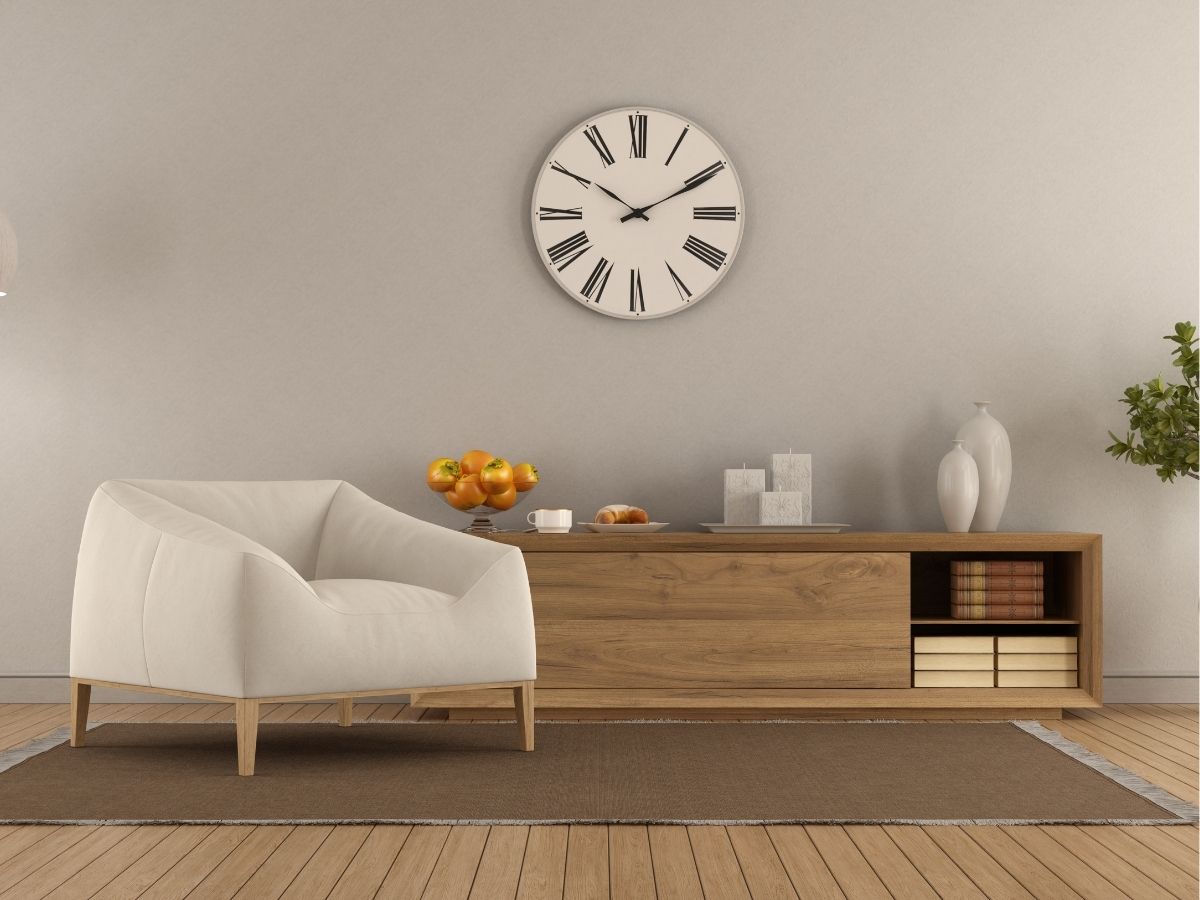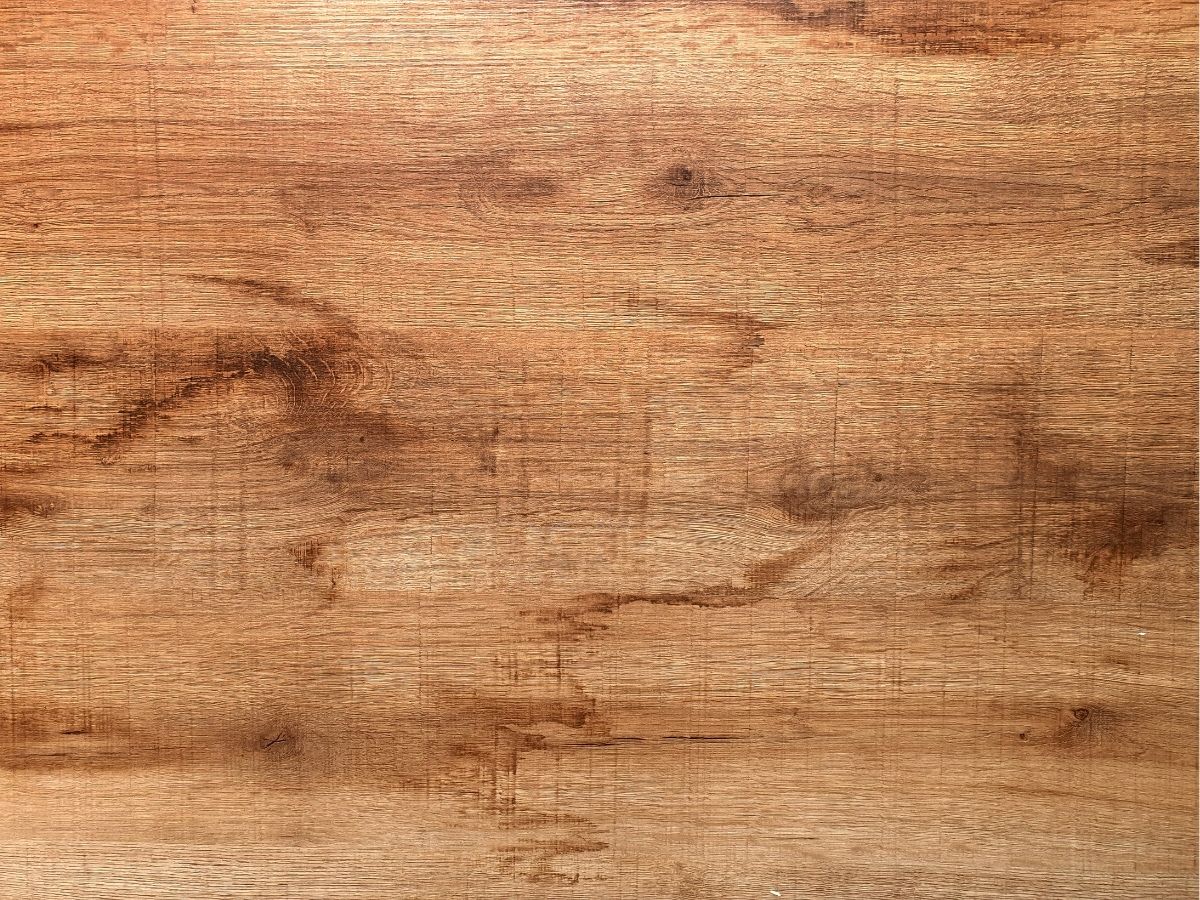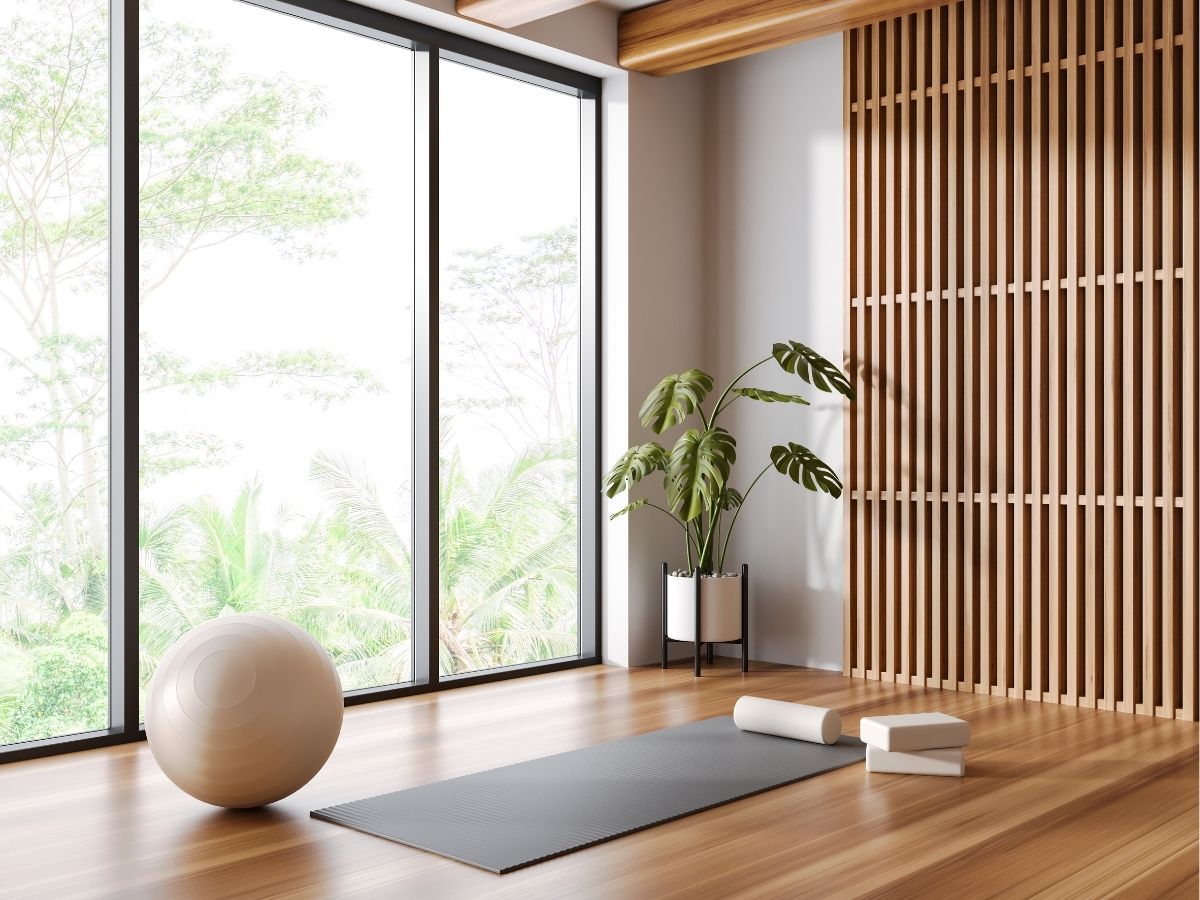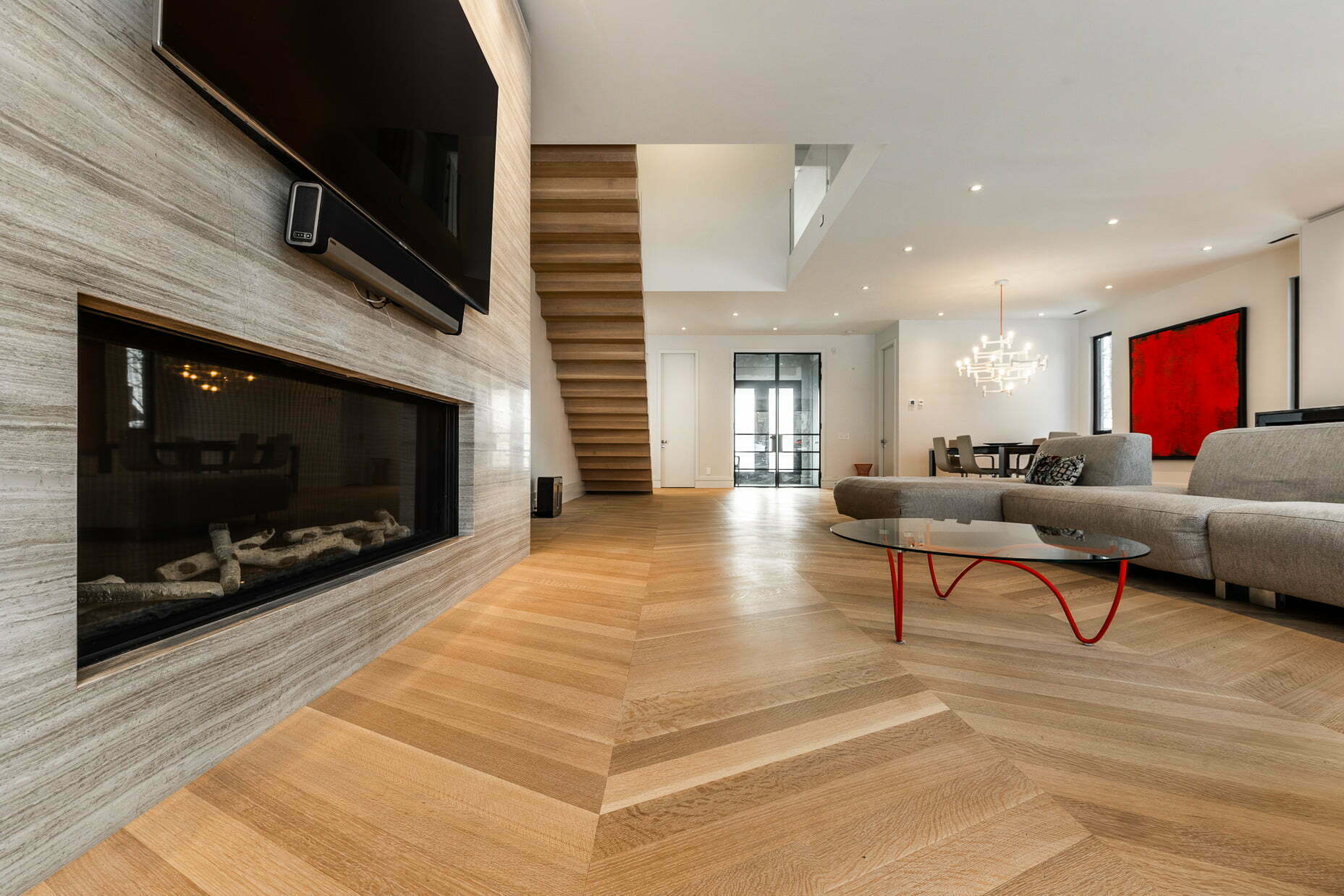Exotic wood floors embody beauty and sophistication, making them a popular choice for many Westmount homes. With their rich hues, unique patterns and durability, they add a touch of elegance to any interior. However, preserving their natural shine and impeccable look is no easy task, especially when it comes to sandblasting. This delicate process requires expertise and specific tools to avoid damaging the wood and maximize its longevity.
In this article, we’ll explore everything you need to know about floor sanding in Westmount, with a particular focus on exotic woods. These types of wood, often denser and more resistant than conventional species, require a customized approach to reveal their natural beauty.
Whether you’re an exotic wood enthusiast or a Westmount homeowner looking to maintain or restore your floors, here you’ll discover key information to ensure that your floors remain impeccable and durable over time. We’ll cover the essential precautions to take before you start, the different stages of sanding, and common mistakes to avoid. We’ll also explain why it’s often best to call on qualified professionals who can deliver impeccable results while preserving the integrity of your precious floors. With the right advice and regular maintenance, your exotic wood floors can remain a major asset to your home for many years to come.
Table of Contents

Introduction to exotic wood flooring in Westmount homes
Exotic woods such as merbau,ipe and jatoba are renowned for their rich hues, distinctive grains and exceptional durability. These wood species add a unique and elegant touch to any interior, transforming living spaces into veritable works of art. However, their high-end character comes with specific maintenance requirements to ensure their longevity and preserve their luxurious appearance. Without proper care, these floors can lose their natural lustre and show signs of premature wear.
Westmount, with its elegant architecture, prestigious homes and detail-oriented owners, is a place where exotic wood fits perfectly into interior design concepts. Whether for stately living rooms, sumptuous offices or refined dining rooms, these floors add undeniable aesthetic value. However, due to their density and composition, exotic woods require expert handling to avoid damaging their structure or finish. This is particularly true when it’s necessary to refurbish them using specialized processes such as sanding and varnishing. Calling in experienced professionals is therefore essential to preserve the charm and quality of these exceptional floors.
Understanding the unique needs of exotic wood
Unlike conventional woods such as oak or pine, exotic woods have unique properties that deserve special attention when sandblasting. Their natural beauty and durability make them popular choices, but these characteristics also bring specific challenges. Here are a few particularities to consider:
Increased hardness
Exotic woods, such as jatoba or ipe, are often considerably harder than local species. For example, jatoba wood is around 50% harder than red oak. This hardness calls for special tools and expertise to avoid damaging the surface or prematurely wearing out the equipment.
Natural oils
Some exotic woods, such as teak or padouk, contain natural oils that can complicate the application of traditional finishes. These oils require the use of specific products to guarantee optimum adhesion and avoid undesirable chemical reactions.
Bright colors
The distinctive colors of exotic woods, such as the deep reds of jatoba or the golden browns of merbau, can fade if the sanding and finishing process is not carried out with care. The choice of abrasives and finishing products plays a vital role in preserving their natural lustre.
Working with exotic woods requires expertise that respects their unique characteristics, but the end result can transform a project into a truly sustainable work of art.
Additional precautions for sanding exotic wood
Sanding an exotic wood floor is a complex task that differs considerably from that of more conventional woods. These species, often denser, rich in vibrant colors and natural oils, require special precautions to avoid damage and preserve their unique beauty. Working with these woods requires not only technique, but also a good understanding of their specific characteristics. Here’s a detailed guide to the key steps to follow for optimum results:
1- Choose the right tools
Exotic woods such as ipe, teak and jatoba are known for their density and high strength, which can make sanding them more complex. The use of high-quality abrasives is essential to guarantee uniform sanding without the risk of creating irregularities in the wood surface. Abrasives with suitable grits, often more resistant than those used for conventional woods, help avoid accidental marks and scratches. And be sure to inspect your tools regularly: worn or poor-quality abrasives can not only slow down work, but also cause lasting imperfections.
2- Work delicately and patiently
Unlike softer woods, exotic species require a gradual, controlled approach. Applying too much pressure during sanding can cause irreversible damage, such as burns due to heating of the fibers, or deep scratches that are difficult to correct. It is advisable to work in the direction of the wood grain to preserve its natural appearance and avoid damaging its texture. Take the time to constantly monitor the condition of the surface to detect any problems early, before they become irreparable.
3- Consider variations in humidity and temperature
Exotic woods are particularly sensitive to climatic variations. Their high density makes them more prone to swelling, warping or cracking in the event of excessive or insufficient humidity. For example, an excessively dry environment could accelerate the appearance of cracks, while prolonged exposure to high humidity could cause fibers to swell. Before starting sandblasting, make sure that the humidity in the room is controlled, ideally between 40 and 60%. In addition, avoid extreme temperatures, as these can also affect wood stability.
4- Carefully test finishes beforehand
The natural oils present in exotic woods, while contributing to their durability and lustre, can pose challenges when applying finishing products. These oils can sometimes react in unexpected ways with certain varnishes, woodstains or additional oils, resulting in staining, poor adhesion or an uneven appearance. Before applying a finish to the entire surface, carry out a test on a small, inconspicuous area to check the product’s compatibility. This test also ensures that the final shade matches your expectations, as exotic woods tend to accentuate the colors of finishes.
5- Clean and prepare the surface properly before starting
Even before sanding, it’s crucial to ensure that the surface is free of dirt, dust or residues of old finishing products. These particles can become embedded in the wood during sanding, creating imperfections that are difficult to correct. Use a mild degreaser if necessary to remove any traces of oil accumulated on the surface, and be sure to dry the wood thoroughly before starting. Good preparation not only guarantees more effective sanding, but also a more uniform finish.
By following these tips, you’ll be able to sand your exotic wood floors with care and precision, while preserving their unique character and durability. These woods, although more demanding, offer incomparable beauty when worked correctly. Every step, from tool selection to final finishing, helps reveal their natural lustre and rich texture, making your floor a true work of art that will stand the test of time.

Difficulties encountered when sanding exotic wood yourself
Even for experienced DIYers, sanding an exotic wood floor can be extremely difficult. These types of wood, such as mahogany, teak or merbau, have unique characteristics that make their handling far more complex than that of traditional wood species. Here are some common challenges you may encounter:
Using inappropriate equipment: Poorly-adjusted or poor-quality sanding machines can cause permanent marks or deep scratches on the delicate wood surface, compromising the final result.
Ignoring specific properties: Exotic woods vary considerably in density, texture and oil content. Ignoring these peculiarities can result in an uneven finish, dullness or even irreversible damage.
Lack of precision in the use of equipment: Sandblasting equipment requires a high degree of precision and know-how. Poor technique can not only damage wood, but also waste time and money.
Inadequate choice of finish: Exotic woods react differently to certain finishing products. The wrong choice can detract from the floor’s aesthetic appeal and reduce its long-term durability, especially in high-traffic areas.
These challenges show just how delicate a task sanding exotic wood can be. For these reasons, many Westmount homeowners prefer to entrust this complex task to qualified professionals. These experts have the tools, experience and knowledge to guarantee impeccable results while respecting the unique characteristics of each wood species. The result? A beautifully restored floor, ready to last for years to come.
A step-by-step guide to our sandblasting process
Our floor sanding services in Westmount follow a rigorous, meticulous process to ensure optimal results, especially for exotic or delicate wood floors. Each step is designed to deliver a flawless finish while protecting your surfaces. Here’s a detailed overview of our procedures:
1- Initial assessment
Before we begin, we carefully inspect your floors for damaged areas such as deep scratches, cracks or stains. This thorough assessment enables us to understand the specific needs of your surface and choose the most appropriate tools and techniques.
2- Preparation
We make sure your space is ready for the operation. All furniture and objects are removed or protected, and the area is carefully prepared. We use advanced dust minimization measures, such as residue collection systems, to keep your home clean and minimize disruption.
3- Multi-stage sandblasting
This is where the magic happens. We use high-precision machines, adapted to the type and condition of your wood. Sanding is done in several stages, with abrasive grains ranging from the coarsest to the finest, to remove damaged layers while ensuring uniform smoothness. Our team is trained to avoid errors such as sanding marks or uneven wear.
4- Cleaning and finishing
Once the sanding is complete, we carefully clean the surface to remove all traces of dust and ensure a clean base. Then we apply a finish tailored to your needs and tastes: whether it’s a natural oil, a protective varnish or a specific stain, each product is selected to enhance the natural beauty of your wood while increasing its durability.
5- Final inspection
Before concluding, we carry out a detailed inspection of our work to ensure that every detail is perfect. We also invite our customers to examine the results and ask questions. If adjustments are necessary, we make them immediately.
Our goal is to beautify your floors while maximizing their longevity and resistance to wear and tear. With our professional approach and attention to detail, your floors will regain their original lustre and charm. Your satisfaction is our top priority!
Why choose professional floor sanding services in Westmount?
Entrusting your floors to experts has many benefits for your Westmount home, and here’s why it makes all the difference:
Superior results
The professionals have state-of-the-art equipment and in-depth expertise, guaranteeing uniform, flawless sanding. Their experience helps avoid costly mistakes that could damage your precious floors.
Time saving
Sanding floors can be a tedious and time-consuming task, especially for the uninitiated. By hiring a skilled team, you can save hours of work while achieving impeccable results. Take advantage of the time you save to concentrate on other projects or relaxing with your family.
Longer service life
Well-executed sanding not only restores the beauty of your floors, it also helps prolong their life. With proper care, your floors will remain strong and elegant for years to come.
Quality assurance
Professional companies often offer warranties on their work, giving you peace of mind. You know your investment is protected by experts who stand behind the quality of their services.
In Westmount, choosing experienced professionals to sand your floors not only ensures that your surfaces retain their natural charm, but also increases the overall value of your property. Why risk compromising the appearance or durability of your exotic floors by trying to do it yourself? With experts, you get a result that enhances your home while respecting its unique character. Choose quality without compromise.

Preserve the beauty of your exotic floors today
Don’t let time and daily wear and tear dull the beauty of your beautiful exotic wood floors. These unique surfaces deserve special care to preserve their natural shine and timeless charm. With our professional sanding services in Westmount, your floors will not only be restored to their original appearance, but also protected from future damage.
Our experts use modern techniques and state-of-the-art equipment to guarantee impeccable results, while respecting the integrity of your exotic wood. Whether your floors need simple refinishing or complete restoration, we have the expertise to meet your needs.
Ready to take the plunge and bring your floors back to life? Contact us today to discuss your project, get a personalized quote or learn more about our processes. Give your floors the treatment they deserve! Request a free quote.
Mebesa offers sandblasting, dust-free sanding and floor installation and finishing services in the following cities: Saint-Hubert, Montreal, Brossard, Boucherville, Sainte-Julie, Saint-Constant, La Prairie, Chambly, Sainte-Catherine, Saint-Lambert, Longueuil, Laval, Delson, Pointe-Claire, Saint-Sauveur, Saint-Jean-sur-Richelieu, Terrebonne, Repentigny, Granby, Kirkland, Châteauguay, Beloeil, Candiac, Saint-Bruno-de-Montarville, Outremont, Ville de Mont-Royal.
For more information on hardwood flooring, see the following articles:
Montreal South Shore: Floor sanding experts available in over 20 cities
Dust-free wood floor finish, what are the benefits?
Simple 6-step method for sanding hardwood floors
Simple 3-step price estimate for hardwood floor sanding
Sanding an old floor in Montréal: 2 major advantages that explain why it’s important
Frequently asked questions
-
How often can you sand an exotic wood floor?
This depends on the thickness of the exotic wood, which is generally denser and more durable than other types of wood. As a general rule, a floor can be sanded 3 to 4 times during its lifetime, as long as the remaining layer of wood is sufficient. If the floor is well maintained and protected from damage, you’ll only need to sand every 10 to 15 years.
-
Does sandblasting create a lot of dust?
Thanks to our modern dust-free blasting equipment, the process is much cleaner than before. Although fine particles may be released, our machines are equipped with a high-performance vacuum system that keeps dust to a minimum. What’s more, we take care to protect your furniture, walls and adjacent spaces to keep your home or commercial space clean.
-
Can I only sandblast a small section?
While this is technically possible, it’s important to note that sanding a small section may result in differences in shade, texture and uniformity with the rest of the floor. This is particularly true of exotic woods, which can react differently depending on exposure to light or wear. For harmonious, long-lasting results, we strongly recommend full sanding to ensure a uniform finish across the entire surface.






0 Comments